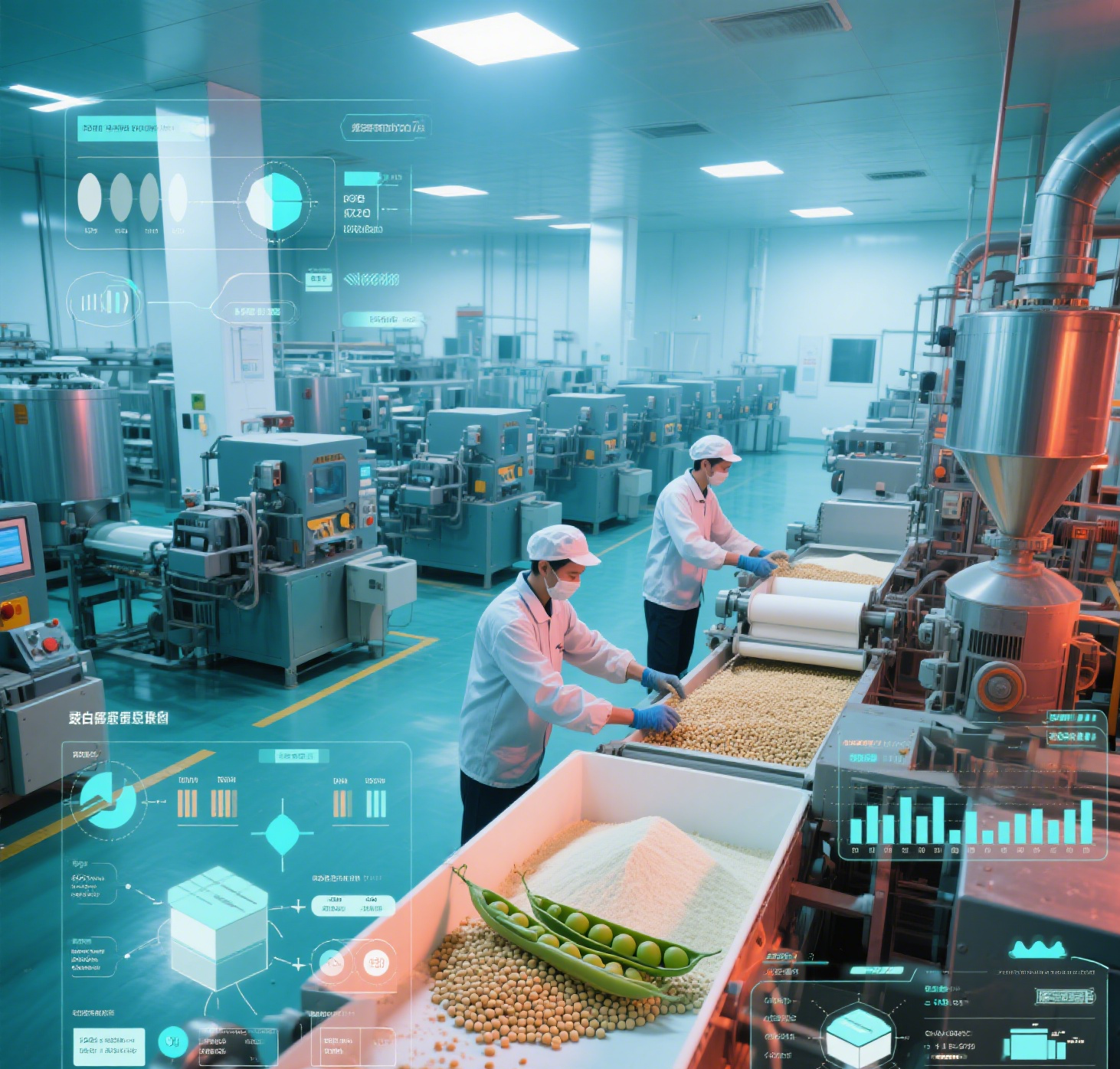Understanding Plant Protein Evolution in Modern Food Production
The landscape of plant-based proteins has undergone a remarkable transformation in recent years, with pea protein emerging as a formidable alternative to traditional soy-based ingredients. Food manufacturers and product developers are increasingly turning to pea protein for its versatile functionality, clean-label appeal, and impressive nutritional profile. As consumer preferences shift toward sustainable and allergen-friendly options, understanding how pea protein performs against soy in various food applications becomes crucial for industry innovation.
Nutritional Composition and Protein Quality
Essential Amino Acid Profile
Pea protein offers a robust amino acid composition that closely rivals soy protein. While soy has traditionally been praised for its complete amino acid profile, pea protein contains significant amounts of essential amino acids, particularly lysine, which is crucial for human nutrition. The branched-chain amino acids (BCAAs) content in pea protein supports muscle maintenance and recovery, making it an excellent choice for sports nutrition products.
Digestibility and Bioavailability
When examining protein quality, digestibility plays a vital role. Pea protein demonstrates excellent digestibility scores, though slightly lower than soy protein. However, pea protein's digestibility can be optimized through various processing techniques, such as enzymatic treatment and controlled heat processing, which enhance its nutritional value and make it more comparable to soy protein in terms of bioavailability.

Functional Properties in Food Systems
Emulsification and Stability
Pea protein exhibits remarkable emulsification properties that make it suitable for various food applications. While soy protein has been the traditional choice for improving texture and stability in processed foods, pea protein demonstrates comparable performance in creating stable emulsions. This functionality is particularly valuable in plant-based dairy alternatives, meat analogues, and bakery products where maintaining proper texture and mouthfeel is essential.
Water Binding and Gelation
The water-binding capacity of pea protein stands out in food formulations. Its ability to form stable gels and retain moisture often surpasses soy protein in certain applications. This characteristic makes pea protein particularly effective in meat alternatives, where moisture retention and texture development are crucial for product success.
Allergenicity and Consumer Acceptance
Allergen Profile Comparison
One of the most significant advantages of pea protein over soy is its lower allergenicity profile. While soy is one of the major food allergens that must be declared on labels, pea protein rarely causes allergic reactions. This characteristic has made pea protein increasingly popular in hypoallergenic food formulations and products targeted at consumers with dietary restrictions.
Consumer Perception and Market Trends
Consumer acceptance of pea protein has grown substantially, driven by clean-label trends and concerns about genetic modification in soy crops. The neutral taste profile of pea protein, when properly processed, allows for versatile application without significantly impacting the final product's flavor. This advantage has led to increased adoption in mainstream food products beyond the traditional plant-based category.
Processing Considerations and Cost Impact
Extraction and Processing Methods
The extraction process for pea protein typically involves wet fractionation or dry milling, followed by protein concentration. These methods can be more environmentally friendly compared to soy protein processing, which often requires more intensive chemical treatments. The growing efficiency in pea protein processing has helped reduce production costs, making it increasingly competitive with soy protein.
Economic Viability and Supply Chain
While soy protein benefits from decades of established supply chains and processing infrastructure, pea protein production has scaled up significantly in recent years. The increasing demand has led to improved economies of scale, though pea protein generally remains slightly more expensive than soy protein. However, the price gap continues to narrow as production capacity expands and processing technologies advance.
Sustainability and Environmental Impact
Agricultural Resource Requirements
Pea cultivation generally requires fewer resources compared to soy farming. Peas are naturally nitrogen-fixing crops that can improve soil health and reduce the need for synthetic fertilizers. This environmental advantage, combined with lower water requirements, makes pea protein an increasingly attractive option for environmentally conscious manufacturers and consumers.
Carbon Footprint Analysis
The overall carbon footprint of pea protein production tends to be lower than that of soy protein, particularly when considering land-use changes and transportation impacts. Peas can be grown in various climates, allowing for more localized production and potentially reduced transportation emissions compared to soy, which often requires long-distance shipping from major producing regions.
Frequently Asked Questions
Does pea protein affect the taste of final products differently than soy protein?
While early pea protein formulations were known for their distinct taste, modern processing techniques have significantly improved its flavor profile. Today's pea protein isolates typically offer a more neutral taste compared to soy protein, often requiring less masking in final applications.
What makes pea protein a sustainable alternative to soy?
Pea protein's sustainability advantages include lower water usage, natural nitrogen-fixing properties that reduce fertilizer needs, and the ability to grow in diverse climatic conditions. These factors contribute to a smaller environmental footprint compared to soy cultivation.
How does the protein content of pea protein compare to soy protein?
Pea protein isolates typically contain 80-85% protein content, comparable to soy protein isolates. Both proteins provide high-quality protein sources, though their amino acid profiles differ slightly, with soy having a marginally more complete profile.

